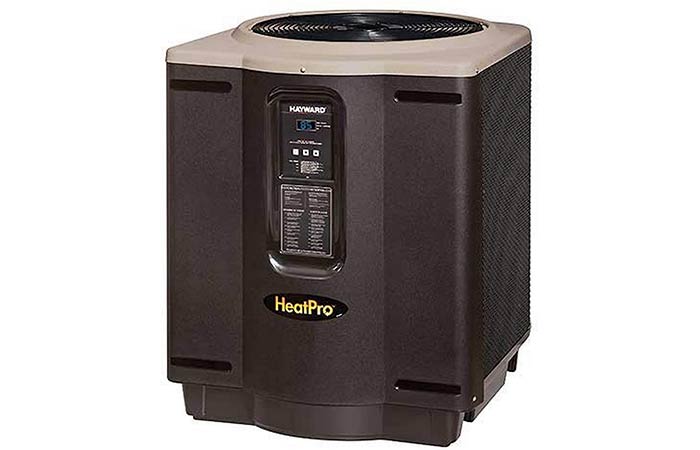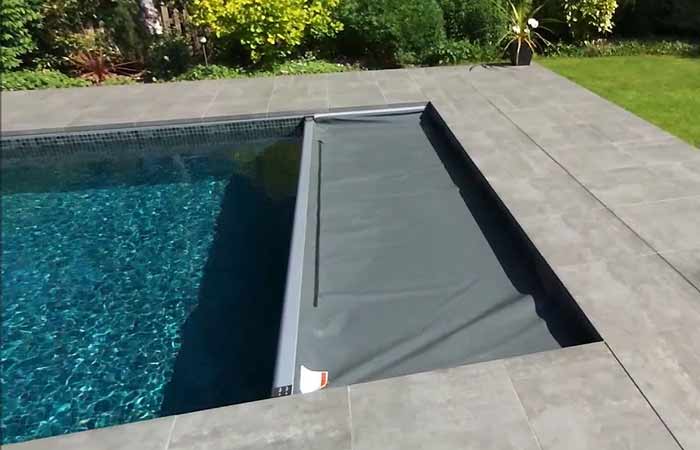Pool Heat Pump Sizing, Calculator & Chart Guide
The right size of pool heat pump will be beneficial in many ways by keeping the runtime to the optimum level, reducing the energy (electricity or fuel) used to heat the water, and generally knowing when the pool would have been heated enough for a swim in your weather of choice.
In this guide, we look at the typical pool heat pump sizing parameters such as the factors determining the size, the rules to choosing the size, and how to calculate the sizing of the pool. These aspects should always be put into consideration to save on time and money on your end.
Guide: Factors that will Determine Size and how
The factors that will determine the size of the swimming pool heat pump include the following:
1. The size of the pool
A larger pool will definitely need a larger pool heat pump to bring the water to a certain temperature within a given time. If you get one that’s too small, it’ll take ages to heat the water. At times, you may never get the water to heat up as the heat lost to the environment can be equal to or more than the heat from the pool heat pump.

2. Ambient temperatures
To heat the pool water to a certain temperature within the same period of time, you’ll need a bigger pool heat pump in the winter than in the same. This is because you’ll need to capture more heat from the environment than in the summer.
3. Type of pool
The type of pool in terms of whether it’s in the ground or above ground also determines the size of the pool heat pump. For those swimming pools that are built into the ground, raising their temperatures and keeping them at a certain level is easier as the ground adds to the heat retention level of the water.
Pools above the ground tend to lose heat to the environment faster than those in the ground as they have larger area exposed to the air outside.
4. Desired temperature rise
How much you need the temperature of the water to rise is also a major factor. Basically, if you need a bigger rise, you’ll need a bigger pool heat pump as it’ll raise the water temperature faster per unit time than a smaller one.
5. Pool coverage
If you cover the pool, it’ll retain heat for longer than if you didn’t. As such, you’ll need a smaller pool heat pump to raise the temperature of the pool to a certain level if you cover it.
These factors should always be considered before deciding on the type and size of pool heat pump for your pool.
Heat Pump Sizing Chart
The pool heat pump sizing guide is as follows:
Above ground pools
| Pool Size in Feet | Summer 4 BTU’s | Spring & Fall 5 BTU’s | Extended 6 BTU’s |
| Up to 13,000 Gallons Up to 21’ Round or 15’ x 26’ Oval | 50,000 BTU | 50,000 BTU | 65,000 BTU |
| Up to 13,000 Gallons Up to 27’ Round or 15’ x 30’ Oval | 50,000 BTU | 65,000 BTU | 85,000 BTU |
| Up to 17,000 Gallons Up to 27’ Round or 18’ x 33’ Oval | 65,000 BTU | 85,000 BTU | 110,000 BTU |
| Up to 21,000 Gallons Up to 30’ Round or 18’ x 40’ Oval | 85,000 BTU | 110,000 BTU | 125,000 BTU |
Sizing for in-ground pools
| Pool Size in Feet | Summer 4 BTU’s | Spring & Fall 5 BTU’s | Extended 6 BTU’s |
| Up to 10,000 Gallons 12’ x 24’ | 50,000 BTU | 50,000 BTU | 85,000 BTU |
| Up to 15,000 Gallons 14’ x 28’ | 85,000 BTU | 85,000 BTU | 110,000 BTU |
| Up to 20,000 Gallons 16’ x 32’ | 85,000 BTU | 110,000 BTU | 125,000 BTU |
| Up to 25,000 Gallons 18’ x 36’ | 110,000 BTU | 125,000 BTU | 150,000 BTU |
| Up to 30,000 Gallons 20’ x 40’ | 125,000 BTU | 150,000 BTU | See your dealer |
BTU: British Thermal Unit (the output per hour that a heat pump offers).

Pool Heater Sizing Calculator and Rules
The core guidelines for sizing your heat pump pool heater are as follows:
- Determine the desired temperature of water in °F.
- Determine the average air temperature for the coldest month in which you plan to use your swimming pool in °F.
- Subtract the average air temperature from the desired water temperature to get the required temperature rise.
- For size at 4 BTU’s per gallon or 1 BTU per liter of water; to heat water in normal summer conditions when the ambient air temperature is about 70°F in a 24-hour period.
- For size at 5 BTU’s per gallon or 1.3 – 1.5 BTU’s per liter of water; to heat in the normal spring and fall conditions when the ambient air temperatures average 60°F in a 24-hour period.
- For size at 6 BTU’s per gallon or 1.5 BTU’s per liter of water; to heat in the normal spring and fall conditions when the ambient air temperatures have an average of less than 60°F in a 24-hour period.
The surface area of a swimming pool in feet2 can be calculated as follows:
- Circular pools: radius x radius x 3.14
- Oval-shaped pools: (0.5 x length) x (0.5 width) x 3.14
- Kidney-shaped pools: length x width x 0.75
- Rectangular pools: length x width
The required BTU output per hour is calculated as follows:
Surface area x temperature rise x 12
If you can’t directly get these measurements and calculations by yourself, you can ask the suppliers of your pool heat pump to do it for you. Chances are high that you already have these measurements from the people who sold or built your pool.
If you want your pool to retain the heat for long, try covering the pool with the right material. This keeps the heat within the same way you keep your food warm by covering it.
Also, keeping the pool heat pump tuning constantly helps in keeping it warm and saving on the electricity bills since you won’t need to heat up the pool from low temperatures each time.
Pool Heat Pumps/Filters






